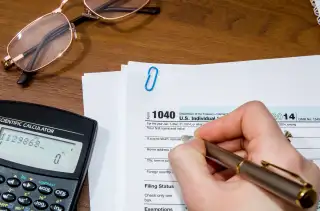Retirees: Miss This Dec. 29 Deadline and You Could Pay Thousands in Fees

If you’re age 70 ½ and over, there’s an important financial deadline to meet before you ring in the New Year. You must take your required minimum distribution from your retirement accounts by Dec. 29 (the last business day of the year) or face a penalty of 50% of the amount not taken on time.
Just a reminder: a required minimum distribution is the amount you withdraw from your traditional retirement accounts including IRAs, 401(k)s, and 403(b)s and income you pay taxes on. The amount changes annually based on your account balances and your life expectancy.
There is a grace period for one type of retiree, though. If you turned 70 ½ this year, you have until April 1, 2018 to take your first distribution. But waiting until next year means you’ll have to take two RMDs in 2018, which could potentially bump you up into a higher tax bracket for the year and raise your premiums for Medicare Part B.
After your first year, your deadline reverts permanently to the end of December. Procrastination is common: as of last month, nearly half of Fidelity’s more than 970,000 IRA customers hadn’t taken any money from their Fidelity IRAs in 2017.
The Internal Revenue Service has a worksheet that helps you calculate the amount you need to withdraw and Fidelity has an online RMD calculator. If you’d like to put your withdrawals on autopilot, Fidelity, Vanguard and other firms will help manage RMDs for customers, calculating them and automatically transferring the withdrawal to a nonretirement account. Individual financial advisors also help their clients manage their RMDs.
Your RMD calculation is based on the prior year’s ending balance across all applicable retirement accounts. But you don't have to take a chunk from each account to satisfy your RMD — you can withdraw from just one or any combination of accounts. If you’d like professional help managing your withdrawals, consider consolidating your retirement accounts with one firm. If you use a financial advisor, make sure to tell that person about every retirement account you have.
For wealthy investors with big account balances, the requirement to take RMDs is “one of the bigger sore spots in retirement income planning,” says Ryan Krueger, a founder of Krueger & Catalano, an investment advisory firm in Houston, Texas.
Happily, Krueger notes, there’s a way to avoid paying taxes on your distribution and do good at the same time: the IRS allows people ages 70 ½ and older to directly transfer up to $100,000 from your IRA to a qualified charity, have that amount count towards your RMD for the year and have it excluded from your taxable income.
And if you’re not yet 70 ½, now’s a good time to brush up on the bite that Uncle Sam will take out of your retirement savings. When you save for decades in tax-deferred 401(k)s or IRAs, you reap some serious tax savings: your contributions are deducted from your gross income and your earnings grow tax-free. Eventually, you have to pay the piper by taking distributions from your accounts and paying ordinary income taxes on them. (This requirement applies only to traditional retirement accounts—contributions to a Roth are taxed on the way in and can generally be withdrawn tax-free in retirement.)